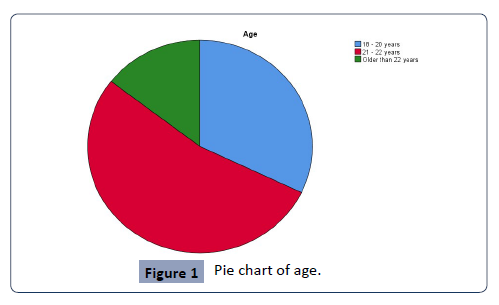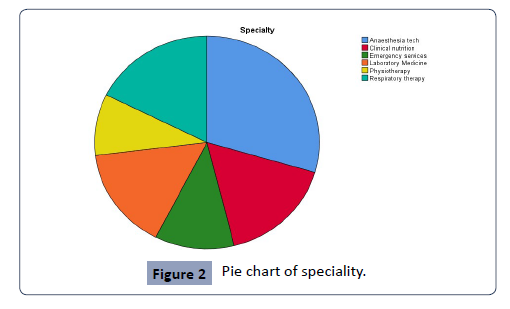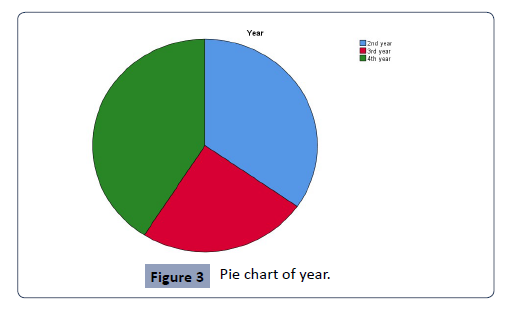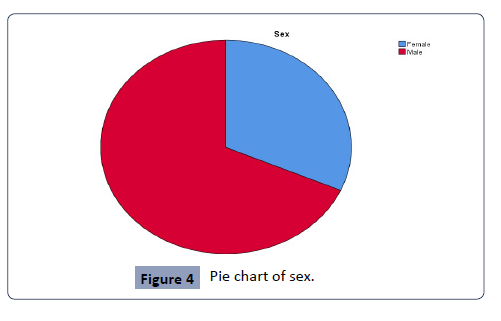Research - (2023) Volume 17, Issue 5
The Effect and Perspective of Applied Medical Science College Students on E-Learning in Umm Al-Qura University in 2021 (COVID-19 Time)
Shammah Ahmed Ali*
Department of Clinical Technology, Faculty of Applied Medical Science, EMS, Umm Al-Qura University, KSA
*Correspondence:
Shammah Ahmed Ali, Department of Clinical Technology, Faculty of Applied Medical Science, EMS, Umm Al-Qura University,
KSA,
Tel: +966505754217,
Email:
, Manuscript No. Iphsj-23-13763;
Editor assigned: 04-May-2023, Pre QC No. iphsj-23-13763 (PQ);
Reviewed: 18-May-2023, QC No. Iphsj-23-13763;
Revised: 23-May-2023, Manuscript No. iphsj-23-13763 (R);
Published:
30-May-2023, DOI: 10.36648/1791- 809X.17.5.1019
Abstract
Background: Covid-19 the pandemic that struck the world in 2019 has affected every
aspect of our lives, economy, education, and many more aspects changing the course
of our lives. In light of that, the government has issued a closure of a lot of activities
and the educational one affects the whole community, this study’s aim to look into
how the shift from the traditional face-to-face method of teaching (E-learning), has
affected students of the Faculty of medical science in Umm Al-Qura University.
Method: A cross-sectional study was the method of choice, a questionnaire made
through Google forms has been made and sent through WhatsApp to the leaders of
every group in every specialty of the Faculty of applied medical science at Umm Al-
Qura University.
Results: over 259 students applied to the questionnaire, and 66 of them were excluded
for being outside of the study sample group, for a total of 193 participants, and we
concluded that the shift to E-Learning might have been challenging but it also had
its pros and cons, be it an improvement in students lives such as more free time, less
stress and anxiety or the disadvantages such as laziness because of the free time or the
lack of understanding of educational material.
Conclusion: E-learning is very new to most people and medical students have accepted
and adapted to it mostly very well, and while they faced challenges they also got the
best out of it, as they preferred if it will be the future method used in education, this
represents a significant and promising potential for the future of medical education.
Keywords
Covid-19; E-learning, Effect and perspective, Umm Al-Qura University,
Applied medical science college
Introduction
In December 2019 in Wuhan, China, a new communicable disease is known now as Covid-19 that is characterized by severe acute respiratory syndromes that are similar to normal flu has been discovered [1]. Covid-19 has made its outbreak in China’s seafood markets as pneumonia of unknown etiology [2], and on January 30th The World Health Organization (WHO) has declared the outbreak as a Public Health Emergency of International Concern (PHEIC) and a pandemic On March 11th [3].
Covid-19 has emerged into our lives faster than anyone could imagine, and it has made a huge impact on our daily lives, changing the course of how things are handled and being done, one of those aspects is the educational one, which has gone through a sudden change from a traditional way of offline studying into a more modern way through online classes, E-learning is not new to Saudi Arabia, as it has been established so far back in 2002 [4], though there is a big difference between those two methods especially for students who have been studying only through the offline traditional method and it could be very challenging [5].
In this study, we’re aiming to find how the shift to online has affected the opinions and perspectives of the medical students of faculty of applied medical science in Umm Al-Qura University in Saudi Arabia.
Method
A cross-sectional study was carried out by collecting data through a questionnaire made by using the platform ‘Google forms’ and it was sent to the study group sample through WhatsApp, and it involved only students studying at the faculty of applied medical science in Umm Al-Qura University, which are Anesthesia technicians, Emergency medicine, laboratory medicine, physiotherapy, respiratory care, Clinical Nutrition.
We contacted every group leader in every specialty in the faculty of applied medical science and requested them to send the questionnaire link to each student, taking into consideration that using the internet and social media apps may result in sending the link to people outside of the study group sample, we inserted a specialty option named as ‘other’ while all the remaining specialty options were that of the study group sample. The set of questions that have been implemented into the questionnaire have been inspired by other researcher’s studies taking place in Saudi Arabia [6, 7].
Results
Over 259 participants have applied to the questionnaire, and 66 of them were from the ‘other’ category, so after excluding them we got 193 out of 1344 students in total, (34.7%) of them were of the second year, (24.4%) were of the third year and (40.9%) of them were of the fourth year (Table 1) (Figure 1-4), (Table 2 & 3)
Figure 1: Pie chart of age..
Figure 2: Pie chart of speciality.
Figure 3: Pie chart of year.
Figure 4: Pie chart of sex..
| Age |
| |
|
Frequency |
Percent |
Valid Percent |
Cumulative Percent |
| Valid |
18 - 20 years |
62 |
32.1 |
32.1 |
32.1 |
| |
21 - 22 years |
103 |
53.4 |
53.4 |
85.5 |
| |
Older than 22 years |
28 |
14.5 |
14.5 |
100 |
| |
Total |
193 |
100 |
100 |
|
| Specialty |
| |
|
Frequency |
Percent |
Valid Percent |
Cumulative Percent |
| Valid |
Anesthesia tech |
57 |
29.5 |
29.5 |
29.5 |
| |
Clinical nutrition |
32 |
16.6 |
16.6 |
46.1 |
| |
Emergency services |
22 |
11.4 |
11.4 |
57.5 |
| |
Laboratory Medicine |
30 |
15.5 |
15.5 |
73.1 |
| |
Physiotherapy |
18 |
9.3 |
9.3 |
82.4 |
| |
Respiratory therapy |
34 |
17.6 |
17.6 |
100 |
| |
Total |
193 |
100 |
100 |
|
| Year |
| |
|
Frequency |
Percent |
Valid Percent |
Cumulative Percent |
| Valid |
2nd year |
67 |
34.7 |
34.7 |
34.7 |
| |
3rd year |
47 |
24.4 |
24.4 |
59.1 |
| |
4th year |
79 |
40.9 |
40.9 |
100 |
| |
Total |
193 |
100 |
100 |
|
| Sex |
| |
|
Frequency |
Percent |
Valid Percent |
Cumulative Percent |
| Valid |
Female |
61 |
31.6 |
31.6 |
31.6 |
| |
Male |
132 |
68.4 |
68.4 |
100 |
| |
Total |
193 |
100 |
100 |
|
Table 1. Frequency table.
| Descriptive Statistics |
| |
N |
Minimum |
Maximum |
Mean |
Std. Deviation |
|
|
| Transitioning into e-learning wasn't followed by any problems |
193 |
1 |
5 |
2.62 |
1.31 |
|
|
| E-learning has affected my understanding of the studying content positively |
193 |
1 |
5 |
2.83 |
1.341 |
|
|
| Time management has become better because of e-learning |
193 |
1 |
5 |
3.32 |
1.503 |
|
|
| E-learning hasn't affected teachers in delivering education |
193 |
1 |
5 |
2.87 |
1.388 |
|
|
| It was easy to communicate with the teachers |
193 |
1 |
5 |
3.61 |
1.291 |
|
|
| Teachers were skilled enough to deliver education online |
193 |
1 |
5 |
3.38 |
1.262 |
|
|
| E-learning has decreased my anxiety |
193 |
1 |
5 |
3.38 |
1.474 |
|
|
| Valid N (list wise) |
193 |
|
|
|
|
|
|
| # |
Questions |
Decisions |
|
|
|
|
|
| 1 |
Transitioning into e-learning wasn't followed by any problems |
SA |
A |
NAD |
D |
SD |
|
| |
|
21 |
38 |
17 |
78 |
39 |
N |
| |
|
10.9 |
19.7 |
8.8 |
40.4 |
20.2 |
(%) |
| 2 |
E-learning has affected my understanding of studying content positively |
31 |
34 |
31 |
65 |
32 |
N |
| |
|
16.1 |
17.6 |
16.1 |
33.7 |
16.6 |
(%) |
| 3 |
Time management has become better because of e-learning |
63 |
38 |
19 |
43 |
30 |
N |
| |
|
32.6 |
19.7 |
9.8 |
22.3 |
15.5 |
(%) |
| 4 |
E-learning hasn't affected teachers in delivering education |
30 |
46 |
24 |
55 |
38 |
N |
| |
|
15.5 |
23.8 |
12.4 |
28.5 |
19.7 |
(%) |
| 5 |
It was easy to communicate with the teachers |
59 |
65 |
15 |
42 |
12 |
N |
| |
|
30.6 |
33.7 |
7.8 |
21.8 |
6.2 |
(%) |
| 6 |
Teachers were skilled enough to deliver education online |
40 |
67 |
30 |
39 |
17 |
N |
| |
|
20.7 |
34.7 |
15.5 |
20.2 |
8.8 |
(%) |
| 7 |
E-learning has decreased my anxiety |
59 |
49 |
24 |
28 |
33 |
N |
| |
|
30.6 |
25.4 |
12.4 |
14.5 |
17.1 |
(%) |
Table 2. Student’s survey regarding close-ended questions.
| In the future, I want to study in the form |
| Offline studying |
Online studying |
Theoretical Online, Practical offline |
Online for practical, offline for theoretical |
|
| 70 |
11 |
109 |
3 |
No |
| 36.3 |
5.7 |
56.5 |
1.6 |
Percentage |
Table 3. Students reply to how they want the teaching format to be in the future.
Students were also asked “what type of problems have they faced during online studying” in an open-ended method, and we have translated their results into the following:
â? Laziness’
â? Missing prayers’
â? Home chores mixing with school.’
â? Some teachers don’t abide by the time limited for lectures.’
â? Technical issues’
â? traditions and customs’
â? headaches and eye pain’
Discussion
The transitioning from offline into the online method of studying might be easy, but it is not perfect as over 78 (40.4%) Disagreed and 39 (20.2%) strongly disagreed that the transition was followed by a couple of problems, we’re contributing these numbers to the open-ended question they’ve been asked, as laziness, technical issues (e.g., internet connection, old instruments) are one of the many problems that one could face during online studying.
It has also been noticed that the students have faced problems in understanding the educational content through the online studying method as over 65 (33.7%) disagreed and 32 (16.6%) strongly disagreed that if the online method has affected their understanding of the educational method positively.
Time is one of the most important factors in a student’s life, and the shift to the online method has affected them positively regarding that aspect, as over 63 (32.6%) strongly agreed and 38 (19.7%) agreed that time management has become easier to do because of e-learning, and time is very crucial because it involves the time they have to study, revise, do homework and attend their own private lives as the offline method has hindered that to some people.
The common theme that is found in this data that most of the student agree that e-learning has made life easier with its special nature, decreasing anxiety in over 59 (30.6%) who strongly agreed and 49 (25.4%) who agree, and that should be considered a positive view since there is a huge correlation between high levels of anxiety and low academic performance as it was mentioned [8].
Students also have found that e-learning eases time management which can make managing school work and studying much more easier and efficient.
Most of the students got their understanding of the educational content affected negatively in the process of shifting into e-learning as over 56 of them disagreed strongly and 32 (16.6%) disagreed with it improving and affecting it positively.
Over 40 (20.7%) have strongly agreed and 67 (34.7%) have agreed that the teaching staff was skilled enough to deliver their teaching material through e-learning.
In Table.3 while 70 students preferred offline studying, over 109 (56.5%) students which is more than half prefer the combined method of online and offline studying, which is reasonable because practical experience and theory not involving that much action regarding practice.
In the last question that has been answered mostly they’re problems that can be solved through a little bit of tweaking, for example, laziness, home chores mixing, missing prayers can all be fixed with good time management, and headaches and eye pain can be resolved with a little bit of rest.
Conclusion
The change from face-to-face offline teaching method is a very challenging experience, and it can affect students in various ways, either be it their mental health or their understanding of the educational material which are the most important aspects of teaching experience, in the end, we have concluded that E-learning can have it’s positive and it’s negative effects on students, as the lack of understanding of the educational material, but it can also be good as it decreased anxiety and of students and gave them so much free time that can be organized for further improvement with good time management either for their personal lives or their academic one.
Footnote
Acknowledgment
I am very thankfully appreciating the contribution and the effort of all the people who helped us in this research especially Anesthesia Technology students, UQU, Makkah namely: Azhar B. O, Al-Horiqi A. M, Kihami B. A, Al-Nabati M. O and Kashmeri A. N, Al-Aidros B. M.
Also the author would like to thank the Deanship of Scientific Research at Umm Al-Qura University for supporting this work by Grant Code : (22UQU4210127DSR02).
Limitation
The limitation of the study included the lack of participants, although the questionnaire form has been sent so many times not many have participated, and the study sample being so limited to faculty of applied medical science in Mecca.
Conflicts of interest
The authors declare no conflicts of interest.
Informed consent
Written consent was obtained from all individual participants included in the study.
Ethical approval for human
All procedures performed in studies involving human participants were in accordance with the ethical standards of Umm Al-Qura.
References
- Wang Horby, Hayden FG, Gao GF (2020) A novel coronavirus outbreak of global health concern. The Lancet 395.
Indexed at, Google Scholar, Crossref
- Nishiura HJ (2020) The Extent of Transmission of Novel Coronavirus in Wuhan, China. Clin Med 9.
Indexed at, Google Scholar, Crossref
- WHO Situation report 51 ,Situation report 51.
Indexed at, Google Scholar, Crossref
- Al-Khalifa, (2010) H S E-Learning and ICT Integration in Colleges and Universities in Saudi Arabia.
Indexed at, Google Scholar, Crossref
- Esani M (2010) Moving from face-to-face to online teaching. Clin Lab Sci 23.
Indexed at, Google Scholar, Crossref
- Khalil R (2010) The sudden transition to synchronized online learning during the COVID-19 pandemic in Saudi Arabia: A qualitative study exploring medical students’ perspectives. BMC Med Educ 20.
Indexed at, Google Scholar, Crossref
- Rajab MH, Gazal AM, Alkattan K (2020) Challenges to Online Medical Education During the COVID-19 Pandemic. Cureus.
Indexed at, Google Scholar, Crossref
- Vitasari P, Wahab M N A , Othman A, Herawan T ,Sinnadurai S K (2010)The relationship between study anxiety and academic performance among engineering students. Procedia Soc 8.
Indexed at, Google Scholar, Crossref
Citation: Ali SA (2023) The Effect and
Perspective of Applied Medical Science
College Students on E-learning in Umm Al-
Qura University in 2021 (Covid-19 time).
Health Sci J. Vol. 17 No. 5: 1019.









